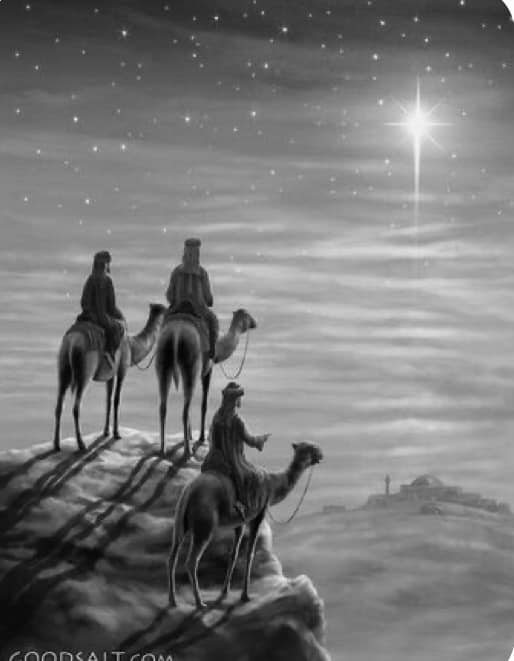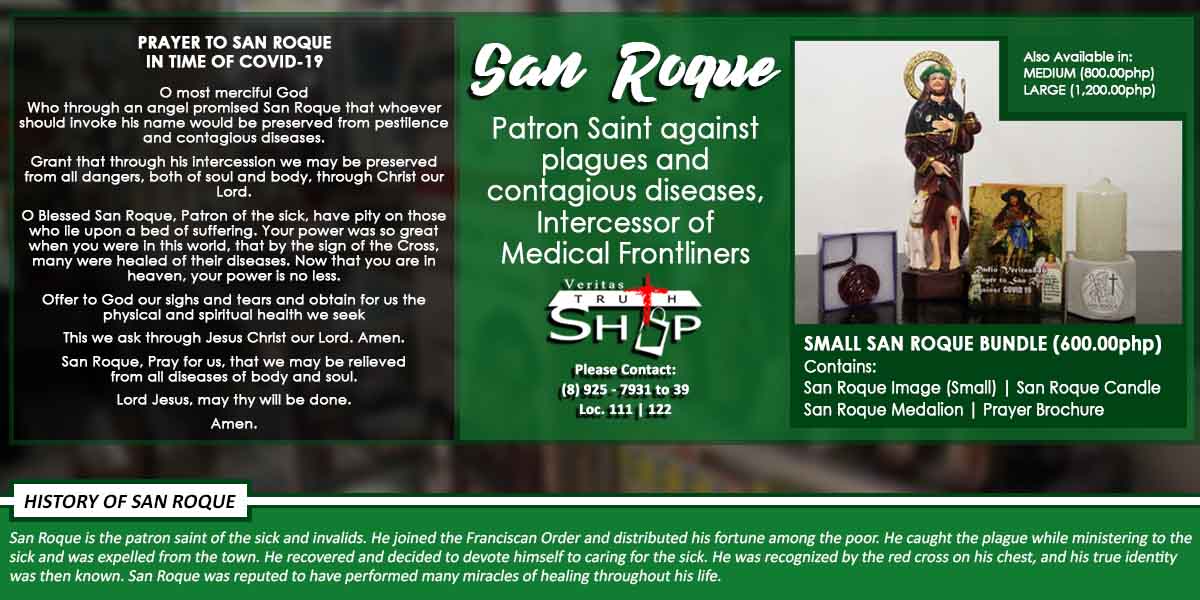305 total views

The solemnity of the Epiphany of the Lord celebrated today is earlier and still popularly known as The Three Kings. But they are identified more appropriately by scholars as Magi, (cf s1S#65). The story of their visit is found only in the gospel of Matthew (2:1-12). Ancient biographers like Plutarch regularly “created” special origins and extraordinary circumstances for the great people whose lives they narrated, the astral phenomena in today’s story, for example.
Without delving into the complicated issue on the…, Matthew narrated the appearance of a star, (2:2, 7; cf s1S#12).
The verb “phainō” ( φαινω )is found in about thirty contexts in the NT with the dual senses of “appear”, shine” throughout. Noteworthy are the angel appearing to Joseph bringing the news of the birth of the Messiah and accompanying circumstances and the star indicating his birthplace in Bethlehem, (Mt 1:20; 2:7, 13, 19). It is also used to refer to the appearance of the resurrected Christ and the final coming of the Son of Man, (Mk16:9; Mt 24:30). Its compound “epi/phainō” refers to the appearance of the grace of God for salvation and the appearance of God’s goodness and kindness (Tit 2:11, 3:4), while its cognate noun “epiphaneia” refers solely to the manifestation of Jesus Christ at his return to earth at the end of the age ((1Tim 6:14; 2 Tm 1:10; 4:18). Understanding the term alongside its equivalent in Hebrew, it connotes specifically the revelation of the Godhead: under the old covenant, God revealed himself and appeared before his people in various guises, namely through theophanic visions, dreams, the glory cloud, and the angel of the Lord; in the new covenant era, it is the person of Jesus the Messiah that the revelation of God comes to its fullest expression.
We celebrate today the Epiphany Sunday, the appearance of the Lord Jesus on the human scene. For the Greeks, the word Epiphany was used to describe the appearance or manifestation of a God among human beings. The Greek fathers used it for the Incarnation of the Son of God. This celebration brings out a prominent aspect of the Christmas mystery, the manifestation of the universal dominion of the newborn king as dramatized in Jesus’ manifestation to the Magi, representing the rest of the world. As the Third Isaiah narrates (6:1-6), not only do the people of Israel return from the diaspora but caravans from all parts of the world are seen on the horizon coming to Jerusalem; while the letter to the Ephesians confirms that the Gentiles are now co-heirs with the Jews in Christ Jesus.
With the symbolism of the star/light, Christ manifested to the world as a light shining in the darkness. May we continue to seek him out as our sole and true light and guide and follow him in faith and be a light to others, leading them to Jesus as well.
Magi
01/02/22
“We three kings of Orient are Bearing gifts we traverse afar…” is a popular song that refers to the visit of the ‘Magi from the east’ (Mt 2:1-12) to the infant Jesus in Bethlehem. The term magos (μάγος) originally referred to a caste of Persian priests with a special claim to interpret dreams. Here they appear as astrologers or astronomers who looked to the movement of the stars as a guide to major events. Where in the East they came from is not clear. The term magi suggest Persia, the practice of astrology indicates Babylon, while the gifts they bring point to Arabia or the Syrian desert. The transliteration ‘Magi’ has been retained and preferred because the modern alternatives are not accurate: ‘wise men’ is too generic, ‘kings’ is inaccurate, and ‘astrologers’ confusing for people today. It is nowhere said also that the visitors were three in number.
The idea that births and deaths of great figures were accompanied by astral phenomena was widely accepted in antiquity. In the Bible what can be considered the earliest mention of a star with reference to the coming of the Messiah is read in Num 24:17: “I see him, though not now, I observe him though not near; a star shall advance from Jacob, and a scepter shall rise from Israel. The Hebrew word is used metaphorically to refer to one who will emerge into the world stage like a rising star. One could find is a redemptive-historical link between this prophecy and that of Mt 2:2ff, with the dominant symbols of a messianic star, that star which the Magi saw rising from the east over Bethlehem announcing the birth of the Christ child. In Rev 22:16 Jesus himself said “I am the root and offspring of David, the bright morning star” affirming the complete fulfillment of the messianic “star” phenomenon, bringing to light the full revelation of that motif- in his birth, life, death, resurrection, and ascension.
This visit of the Magi adds a new and central feature to the Christmas message. Considered as Epiphany, that is manifestation, Jesus is proclaimed to the nations. Jesus is not solely the Jewish Messiah; he comes for the entire world. In Christ, all barriers will fall. In Trito-Isaiah (60:1-6) Jerusalem looks out upon her people returning from the diaspora but on a far distant horizon appear caravans from all parts of the world. While St. Paul (Eph 3:2-3,5-6) sees this as the great mystery now revealed in the final times: the total equality of Jew and Gentile in God’s plan. The account of the Magi summarizes it all in story form. While the Jews, with scriptural prophecies in hand, remain apart the foreigners move in faith in Bethlehem.
As we celebrate the feast of the Epiphany may we understand that Jesus teaches us that there is no room for religious elitism and that in God’s eyes, all are equal. And we are not to build roadblocks of any type. We are all co-heirs, co-members, and co-partners. We are called to a classless society in a Christian sense. And so let us pray: “O God, you revealed in Christ your eternal plan of salvation for all peoples, grant that we may recognize each one as brothers and sisters and truly live as your children should”. Amen.
Star
01/03/21
In the Philippines, we call our indigenous star PAROL, an iconic decoration that is ever present in our Christmas celebration. In the Bible what can be considered the earliest mention of a star with reference to the coming of the Messiah is read in the Book of Numbers 24:17: “I see him, though not now, I observe him though not near; a star shall advance from Jacob, and a scepter shall rise from Israel. The Hebrew word kôkãb (כּוֹכָ֜ב), is used metaphorically to refer to one who will emerge into the world stage like a rising star. One could find is a redemptive-historical link between this prophecy and that of Mt 2:2ff, with the dominant symbols of a messianic star. The Greek equivalent aster (ἀστήρ, was sighted rising from the east over Bethlehem announcing the birth of the Christ child.
The powerful symbolism of the star will be continued in reference to Christ as the light: “the dawn from on high to shine on those in darkness (Lk 1:78-79); ‘through whom all things came to be and without him nothing came to be. What came to be through him was life and this life was the light of the human race; the light that shines in the darkness, and the darkness has not overcome it”(John 1:3-5). To him John the Baptist testified: “the true light which enlightens everyone, was coming into the world” (John 1:9). Jesus himself said “I am the light of the world. Whoever follows me will not walk in darkness but will have the light of life “ (John 8:12). And going back to this star imagery, the Book of Revelation Jesus himself said, “I am the root and offspring of David, the bright morning star” (22:16, cf. 2:28), affirming the complete fulfillment of the messianic “star” phenomenon, bringing to light the full revelation of that motif- in his birth, life, death, resurrection, and ascension.
As we have begun the new year, let us continue to hope, pray, and work for a brighter, better, and safer 2021 by following what the Lord commanded us: “You are the light of the world… your light must shine before others, that they may see your good deeds and glorify your heavenly Father” (Mt 5:14-16). And we pray: “O God, who on this day revealed your Only Begotten Son to the nations by the guidance of a star, grant in your mercy, that we, who know you already by faith, may be brought to behold the beauty of your sublime glory”. Amen.

















